





![]()
assured him that pine needles are not a problem as far as acidifying the soil is concerned. When he persisted, I changed the subject. I knew from past experience that this gardening myth was so deeply ingrained in garden lore that with some gardeners there was nothing I could say that would cause them to change their minds.
I do hope, however, to convince the majority of my readers that this is indeed a myth and to offer a few tips along the way for using mulch and, in particular, "pine straw," the usual term for pine needles used as mulch.

![]()
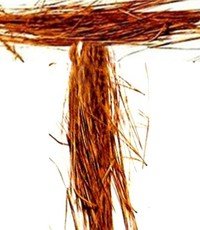
he most convincing fact for me is right there in that bed of salvia (photo below). When I inherited the bed over 20 years ago, the soil in it tested at a pH of 7.0. This is the ideal soil pH, because so many plants do well at this level, which is neither acid nor alkaline. The exceptions are acid-loving plants such as azaleas, camellias, and blueberries and alkaline-loving plants such as cosmos, daylily, and foxglove (see also table at right below). I've mulched the bed with pine straw for every one of those 20 years. Today, especially for this article, I measured the pH again. The meter registered at 7.0, exactly where it was when I started the bed so many years ago.
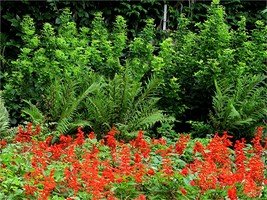
Here are some other facts to consider:
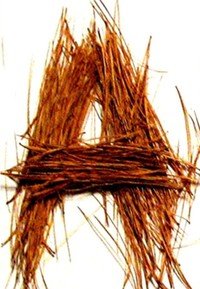 nother issue sometimes raised in the pine-straw-as-mulch debate is that of terpenes in the needles. Terpenes are chemical molecules said to retard germination and new growth. Since I don't mulch seed beds and use pine straw only in established beds, retardation of germination is a good thing. It helps to keep weed seeds from germinating.
nother issue sometimes raised in the pine-straw-as-mulch debate is that of terpenes in the needles. Terpenes are chemical molecules said to retard germination and new growth. Since I don't mulch seed beds and use pine straw only in established beds, retardation of germination is a good thing. It helps to keep weed seeds from germinating.
The terpene effect turns out to be short-lived. Terpenes dissolve readily in water and dissipate into the air, leaving behind only trace amounts that may discourage germination but certainly don't harm established plants. By the time pine needles are brown and dry, most of the terpenes have evaporated. Once that wonderful pine fragrance has gone out of the needles, so have the terpenes, the source of that fragrance.
So why is pine straw a good mulch? Let me count the ways:
1. It lasts a long time. Pine straw doesn't float and wash away. It breaks down more slowly, so it doesn't need to be reapplied as often as other mulches.
2. It's lightweight, lighter per cubic foot than most other mulches. The bales are easy to carry and offer more coverage for the equivalent weight of other mulches.
3. It's sustainable. No trees are harvested to produce it.
4. It promotes soil health. The soil breathes better, doesn't compact, and allows for better water infiltration with pine straw than with other mulches.
5. It promotes plant health. Its decomposition adds organic material and nutrients to be taken up by plants.
6. Its uniform color and fine texture is visually appealing.
7. It doesn't attract termites.
8. It's easy to apply.
Find these tips and more info here
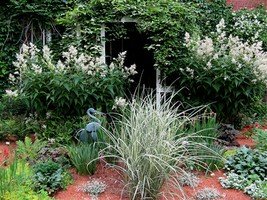 Note how the pine straw helps to unify the
Note how the pine straw helps to unify the
various elements in this garden bed.
For me personally there is a no. 9 reason or perhaps I should make it the number one reason I use pine straw. It's free! I'm fortunate to have free access to a nearby source. If you'd like to try pine straw, but don't have any pine trees on your property, scout around to see who does. If you don't mind being a bit forward, ask the owner/owners if they use their pine straw. If not, or if they have a surplus, ask if you may stop by to collect some.
![]() ther sources for pine straw include your local nursery or garden center. Pine straw is generally sold in bales. The needles in the bales are compacted. When you untie a bale, you'll be amazed at how much the needles expand and how much coverage a single bale will provide. Failing local sources, you can also find pine straw online. Here are a few sources: By the box, By the bale, By the bale.
ther sources for pine straw include your local nursery or garden center. Pine straw is generally sold in bales. The needles in the bales are compacted. When you untie a bale, you'll be amazed at how much the needles expand and how much coverage a single bale will provide. Failing local sources, you can also find pine straw online. Here are a few sources: By the box, By the bale, By the bale.
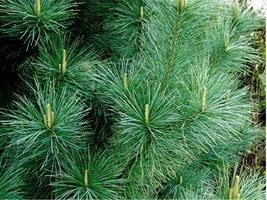 Pine straw bale. Bales come in different sizes and
Pine straw bale. Bales come in different sizes and
shapes.
 nd the larger question: Why mulch at all?
nd the larger question: Why mulch at all?
At this time of year (fall) my number one reason to mulch is the prevention of alternate freezing and thawing of the soil between now and spring. This process can lift plant roots right out of the soil and is called "heaving." Our strawberry bed, in particular, is subject to heaving, so we make sure to cover it with at least three inches of pine straw every fall.
Other reasons to mulch:
![]()
DG Photo Credits:
Eastern White Pine by catcollins
Loblolly Pine by trois
*See recent article by DG writer, Sharon Brown
pH VALUE
SOIL REACTION
SUITABILITY FOR PLANTS
1
Very strongly acid
Unsuitable for all
2
Very strongly acid
Unsuitable for all
3
Strongly acid
Suitable for very few
4
Acid
Suitable for some
5
Acid
Suitable for many kinds
6
Slightly acid
Suitable for most kinds
7
Neutral
Suitable for most kinds
8
Slightly alkaline
Few species tolerate
9-10
Alkaline
Only highly specialized species tolerate
11-12
Alkaline
No growth
13-14
Strongly alkaline
No growth
Want to test the pH of your soil? You can find pH meters at your local nursery/garden center or online at:
Amazon.com
Target
Home Harvest
Ideal Soil pH for Selected Plants
Ageratum
6.0-7.5 Alyssum 6.0-7.5 Aster 5.5-7.5 Azalea 4.5-6.0 Calendula 5.5-7.0 Candytuft 6.0-7.5 Carnation 6.0-7.5 Celosia 6.0-7.0 Crysanthe- Iris 5.0-6.5 Lavender 6.5-7.5 Lilac 6.0-7.5 Marigold 5.5-7.0 Morning
Glory 6.0-7.5 Nastur-
tium 5.5-7.5 Pansy 5.5-7.0 Petunia 6.0-7.5 Pinks 6.0-7.5 Poppy 6.0-7.5 Portulaca 5.5-7.5 Primrose 5.5-6.5 Roses 5.5-7.0 Salvia
(Annual) 6.0-7.5 Snap-
dragon 5.5-7.0 Sun-
flower 5.0-7.0 Sweet
Pea 6.0-7.5 Sweet
William 6.0-7.5 Tulip 6.0-7.0 Viola 5.5-6.5 Zinnia 5.5- 7.5
Popular Pines

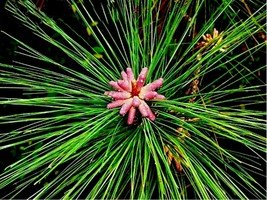
Questions? Comments? Please scroll down to the form below. I enjoy hearing from my readers! Click HERE for a text only version of this article.
© Larry Rettig 2009
Editor's Note: This article was originally published on November 4, 2009. Your comments are welcome, but please be aware that authors of previously published articles may not be able to promptly respond to new questions or comments.)Copyright © www.100flowers.win Botanic Garden All Rights Reserved